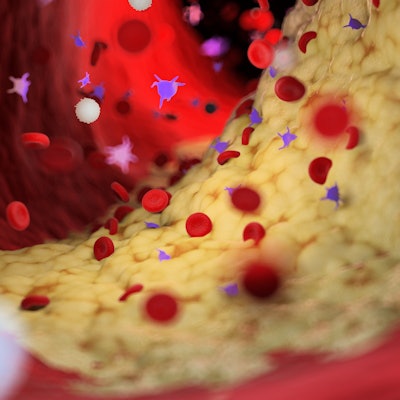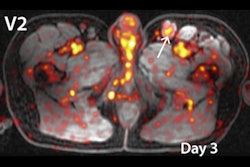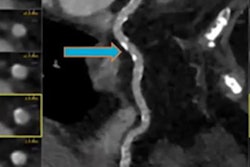
Coronary CT angiography (CCTA) shows that HIV-positive people have higher incidence of coronary plaque -- even if they are at low to moderate risk for cardiovascular disease, according to a study published June 29 in JAMA Network Open.
The study suggests that research on how statin therapy could help this population is key, even in young people with HIV with low traditional risk of atherosclerotic cardiovascular disease, wrote a team led by Dr. Udo Hoffmann of Massachusetts General Hospital in Boston.
"[Our] study found a substantial prevalence of coronary artery disease," the team wrote. "Key markers of innate immune activation and arterial inflammation were associated with coronary artery disease in this group with well-controlled HIV disease, independent of traditional risk factors."
It's known that people with HIV are at increased risk of cardiovascular disease, but the prevalence and extent of coronary artery disease among HIV-positive people with low to moderate traditional cardiovascular disease risk has been unclear, the team wrote. Hoffmann's group used CCTA to investigate the specific factors associated with cardiovascular disease in people with HIV, and to assess levels of coronary artery disease.
The study included 755 HIV-positive men and women between the ages of 40 and 75 without known cardiovascular disease who were receiving antiretroviral therapy and had low to moderate atherosclerotic cardiovascular disease risk. Data came from a larger study called the Randomized Trial to Prevent Vascular Events in HIV (REPRIEVE), research conducted between May 2015 and February 2018 to explore the effectiveness of statin therapy among HIV-positive people.
The primary outcome of the study was prevalence and composition of coronary artery disease assessed by CCTA; exams were rated for the presence and composition of atherosclerotic plaque and the degree of stenosis. The team also explored whether there were any associations between coronary artery disease and typical risk factors and biomarkers in this population (such as insulin, interleukin 6, and C-reactive protein).
The investigators found plaque in 49% of study participants, including almost 30% in a subset of patients with cardiovascular disease risk of less than 2.5%. They also found that 35% of patients had coronary artery calcium scores greater than 0, and that "markers of innate immune activation and arterial inflammation [were] associated with coronary artery disease in this group with well-controlled HIV disease."
| Percentage of coronary artery disease among HIV-positive people by risk of atherosclerotic cardiovascular disease | |||||
| Variable | All participants | Risk of 0% to < 2.5% | Risk of 2.5% to < 5% | Risk of 5% to < 7.5% | Risk of ≥ 7.5% |
| Patients with any plaque | 48.7% | 29.7% | 47.4% | 56.3% | 64% |
The research points to the importance of carefully monitoring HIV-positive people for cardiovascular disease.
"Plaque characteristics in this group suggest a low prevalence of significant stenosis, but vulnerable plaque characteristics were seen in nearly one-quarter," the authors concluded. "It will be critical in future studies to determine how this unique plaque phenotype related to major adverse cardiovascular events over time."





















